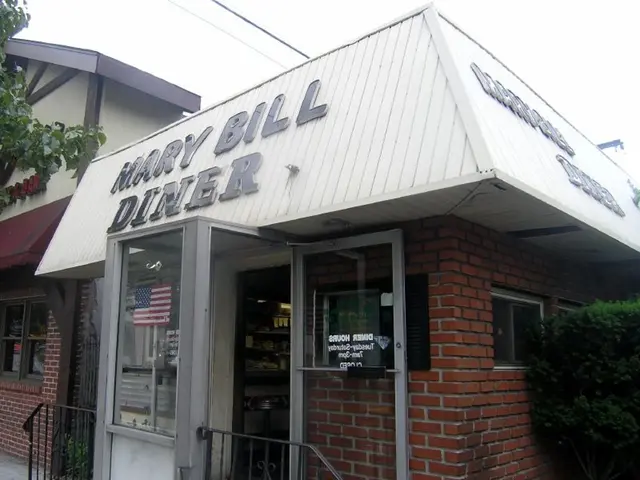Eight Unsuitable Locations to Avoid for a Vegetable Garden
Vegging Out in the Shade: Tips for a Thriving Shade-Tolerant Garden
Growing your own veggies can be a rewarding experience, but not every garden thrives in ideal conditions. If your yard leans more towards the shady side, don't despair! Here are some veggies that can handle low light levels and a few locations to steer clear of.
Shun the Shade:Most vegetables crave sunshine, needing at least 6 to 8 hours of full sun every day to flourish. Placing veggie beds in constantly shaded areas will result in an unproductive garden. The plants won't develop, and some seeds may not sprout.
The Solution: If your yard is heavily shaded, consider growing veggies in containers or small, movable raised beds. Or, opt for shade-tolerant plants like leafy greens and beets.
Avoid Walnut Trees' Chemical Love Letters:Black walnut trees, alongside a few other species, secretly drop a chemical compound known as juglone, which hinders the growth of neighboring plants. Nightshade crops like tomatoes and peppers, and a few others, are especially sensitive to juglone, potentially fading or dying if grown close to black walnut trees or their mulch.
The Solution: Keep veggie beds at least 50-feet away from black walnut tree trunks, or cultivate more juglone-resistant veggies like carrots, beets, melons, and squash.
Steer Clears and Terraces:Locating vegetable gardens on sloping terrain is a challenge, as it's tough on the back and ankles and can lead to erosion issues. Plus, plants and soil will migrate to the lower side of raised beds.
The Solution: If yours is a slight slope, level bumps and ridges off with a shovel or rake. If you have a steep slope, consider creating a terraced garden or growing veggies in pots or containers on a deck or patio.
Keep Your Distance from the House:Gardens positioned right beside your kitchen door may seem convenient, but they may not receive enough light. Worse yet, they may be contaminated with lead from old paint and other materials.
The Solution: Studies suggest placing gardens at least 15 feet away from old buildings and other structures, although you may want to position your garden even further to minimize exposure. Choose locations in your yard that receive ample sunlight.
De-Ice Wisely:Roadway de-icing salt splashes into gardens placed too close to driveways and roadways, causing salt buildup in the soil, which can harm plants and make gardens infertile.
The Solution: Maintain a safe distance between veggie beds and roadways and driveways, and refrain from using de-icing products near your garden. To limit road salt issues, grow veggies in tall raised beds or install fencing or temporary barriers made with garden stakes and burlap.
Vegetables, Far Away From Septic Systems:Growing vegetables on septic systems and leach fields can lead to pathogen exposure and damage to your plants' root systems.
The Solution: Don't place veggie gardens on top of or near leach fields. If you want to grow anything in leach field areas, opt for shallow root systems like bee balm, yarrow, and creeping phlox.
Embrace the Breeze, But Mind the Wind:While some vegetables can handle a bit of wind, locating veggie gardens in extremely windy areas can lead to plant stress and broken stems, making it particularly challenging to grow tall plants.
The Solution: Install a fence or windbreak on the prevailing windward side of your garden to protect your veggies. For a quick, inexpensive fix, create a simple fence or "dead hedge" using stakes and twigs on the windward side of your garden.
Hard Surfaces, Soft Solutions:Placing raised beds on hard surfaces, like patios or driveways, can potentially cause drainage problems, leading to soggy soil and hampering root growth for root vegetables.
The Solution: If you want to install raised beds on a hard surface, ensure the bed is sufficiently deep to accommodate the root systems of your chosen plants. On decks or balconies, take additional precautions to prevent leaks and wood rot, such as sealing your decking with waterproof sealant.
By careful planning and a bit of know-how, you can create an inviting and productive shade-tolerant veggie oasis, even in less-than-ideal growing conditions.
Additional Tips:- Avoid growing vegetables near areas with large root systems or in poorly drained areas with compacted or poor soil conditions.- Consider building raised beds to elevate your plants above unfavorable soil conditions, or adding organic matter like compost or manure to improve soil permeability.- Conduct sun studies to determine the sunniest spots in your garden and choose shade-tolerant plants if necessary.- Use tools to aerate and gently till the soil to reduce compaction without damaging soil structure.
- For a thriving shade-tolerant garden, consider growing vegetables in containers or small, movable raised beds to accommodate the low light levels in shady areas.
- Black walnut trees release a chemical compound called juglone, which hinders the growth of neighboring plants, so it's best to keep veggie beds at least 50-feet away from black walnut tree trunks, or cultivate more juglone-resistant veggies like carrots, beets, melons, and squash.
- Locating vegetable gardens on sloping terrain can cause challenges in terms of erosion and plant migration, so consider creating a terraced garden, growing veggies in pots or containers on a deck or patio, or leveling bumps and ridges off with a shovel or rake if the slope is slight.
- Placing gardens right beside the house may not receive enough light or be contaminated with lead from old paint and other materials, so it's best to position your garden at least 15 feet away from old buildings and other structures.
- To minimize road salt issues and prevent pathogen exposure, don't place veggie gardens on top of or near leach fields, and maintain a safe distance between veggie beds and roadways and driveways while growing veggies in tall raised beds or installing fencing or temporary barriers made with garden stakes and burlap.




